Five Strategies for Designing Schools to Support Educators
Key Points
-
Cleanliness, daylighting, safety and air quality are all part of the basic conditions that have been directly linked to teacher health and workplace performance.
-
Choice and control over spaces are essential to give teachers the agency to feel they are fulfilling their needs and roles.
-
A sense of collective responsibility and peer collaboration is important for educators.
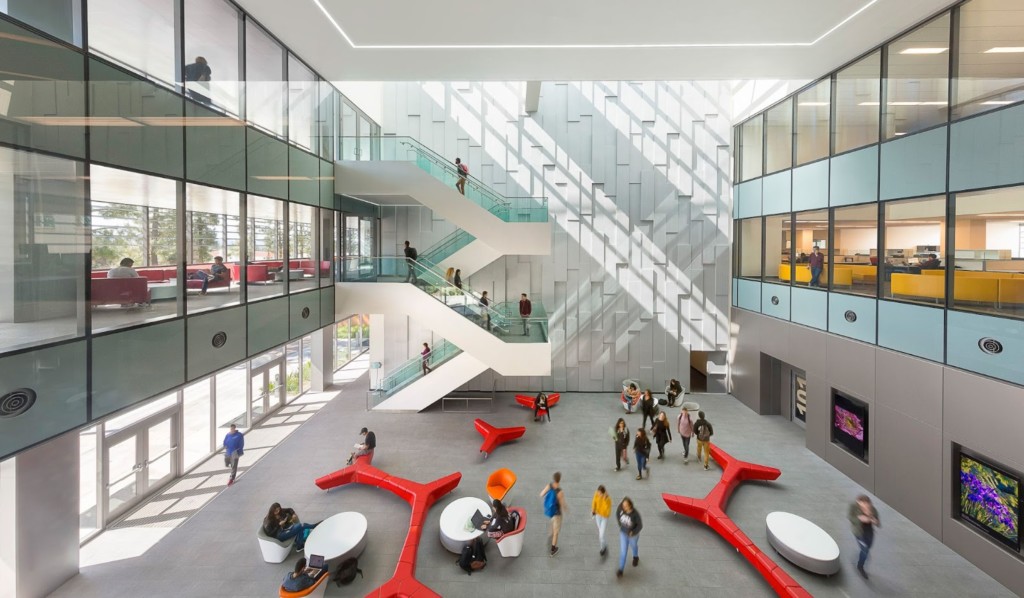
By: Kate Mraw
For teachers, the school is a workplace. In many ways, the factors that spur teachers to change jobs or thrive are similar to those influencing employees in a corporate environment.
But there has been little academic focus on the campus as a workplace environment, which is surprising. Nationwide, the annual teacher turnover rate is an estimated 16 percent, according to a 2019 study, up from 12 percent in the 1990s. Schools are spending more than $8 billion a year replacing teachers — including recruiting, hiring and training. There is a lot of associated research that demonstrates teachers are aware of their facility and recognize its impact on their work, but little data on how to make those facilities work better for them.
LPA researchers and designers recently took a deep dive into teacher-retention issues, focusing on available research that can help develop facilities that attract and retain teachers, reduce stress and support the aspirations of educators. We always talk about designing with the student in mind and we wanted to take the same approach to exploring teachers’ needs and challenges. The analysis moved beyond classrooms to look at collaborative spaces, workplace design and the health and wellness issues affecting teachers.
The quality of the working conditions is often cited as a key aspect in teacher retention and successful learning outcomes. Recent reports echo a 2002 study by Linda Darling-Hammond, a Stanford University professor, which found that working conditions, facilities and space problems are strong and significant predictors measures of turnover.
New research refutes the assumption that community demographics are the primary reason why teachers leave schools in high-poverty neighborhoods. While the turnover rate is higher in challenged neighborhoods, the latest studies overwhelmingly point to working conditions, not demographics or poverty, as the main source of dissatisfaction. In one study, 40 percent of teachers who graded their facilities with a C or below said that poor conditions led them to consider changing schools.
“Poor working conditions in America’s neediest schools explain away most, if not all, of the relationship between student characteristics and teacher attrition,” says education researcher and strategist Dr. Julie Zoellin Cramer, founder of Wayfind Education and an LPA consultant.
“Now, more than ever, teachers need our support to make certain that their working environment translates into the best possible learning environment for students.”
Kate Mraw
In many ways, the factors that spur teachers to change jobs are similar to those influencing employees in a corporate environment. Herzberg’s two-factor theory (also known as Herzberg’s motivation-hygiene theory) spells out the main reasons for employee satisfaction and dissatisfaction and can also provide a guide for schools. External hygiene factors are tangible, as are such basic needs as status, job security, salary, and benefits. Improving baseline hygiene decreases job dissatisfaction. Internal motivation factors are less tangible, such as challenging work, recognition, and professional and personal growth. Improving these more personal motivators increases job satisfaction.
The pandemic has heightened the need for awareness of teacher work environments, says Georgeanne Warnock, Ed.D., Superintendent of Schools for Terrell ISD, a district working to improve learning environments for students and teachers. Schools are focused on “closing gaps” and “recovering learning loss,” which won’t happen without the dedicated work of teachers in the classroom, she notes.
“Now, more than ever, teachers need our support to make certain that their working environment translates into the best possible learning environment for students,” Superintendent Warnock says.
In her discussions with teachers, recurring themes emerge. They want comfortable and clean environments with natural light, access to resources and flexible spaces to create and innovate with their students. “Shouldn’t we all want this to be the working environment we aspire to so that our students have the best learning environment?” she says.
Our research project identified five key strategies for improving working conditions in relation to facilities. There are other approaches, but these five are repeatedly discussed in research. A focus on these five strategies can lead the design process to address many specific areas that improve the teachers’ work environment.
Baseline Conditions for Learning
Acoustic comfort is a huge factor and tops the list in many studies. Cleanliness, daylighting, safety and air quality are all part of the basic conditions that have been directly linked to teacher health and workplace performance.
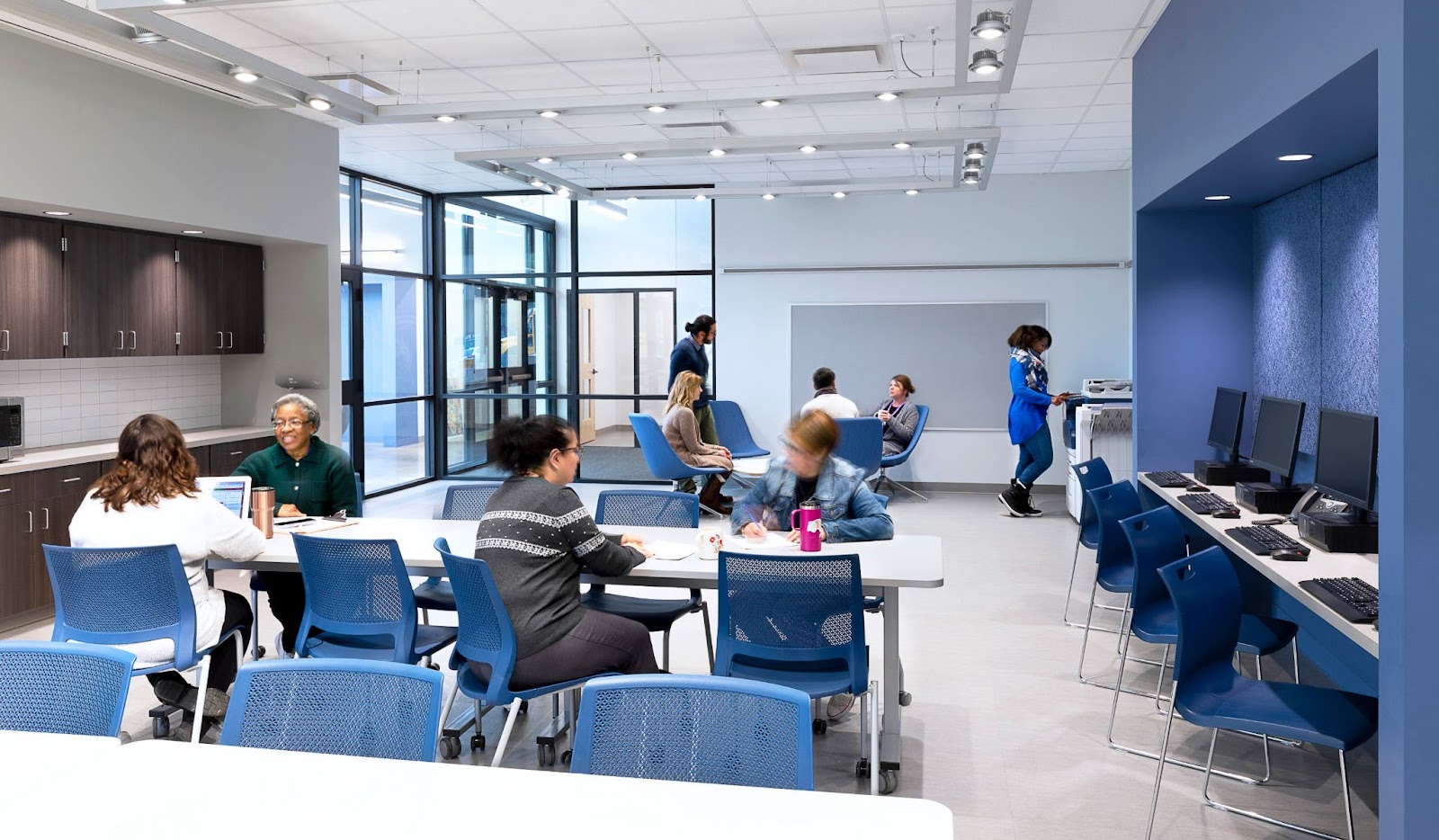
Learning Resources
Adequate, well-located spaces and access to tangible resources rank as priorities. Use of flexible furniture, adjacencies, multi-use spaces and activated outdoor spaces help give educators the feeling that the facility is supporting their workflow and goals. It is also important not to put classrooms in spaces that are not meant for classrooms.
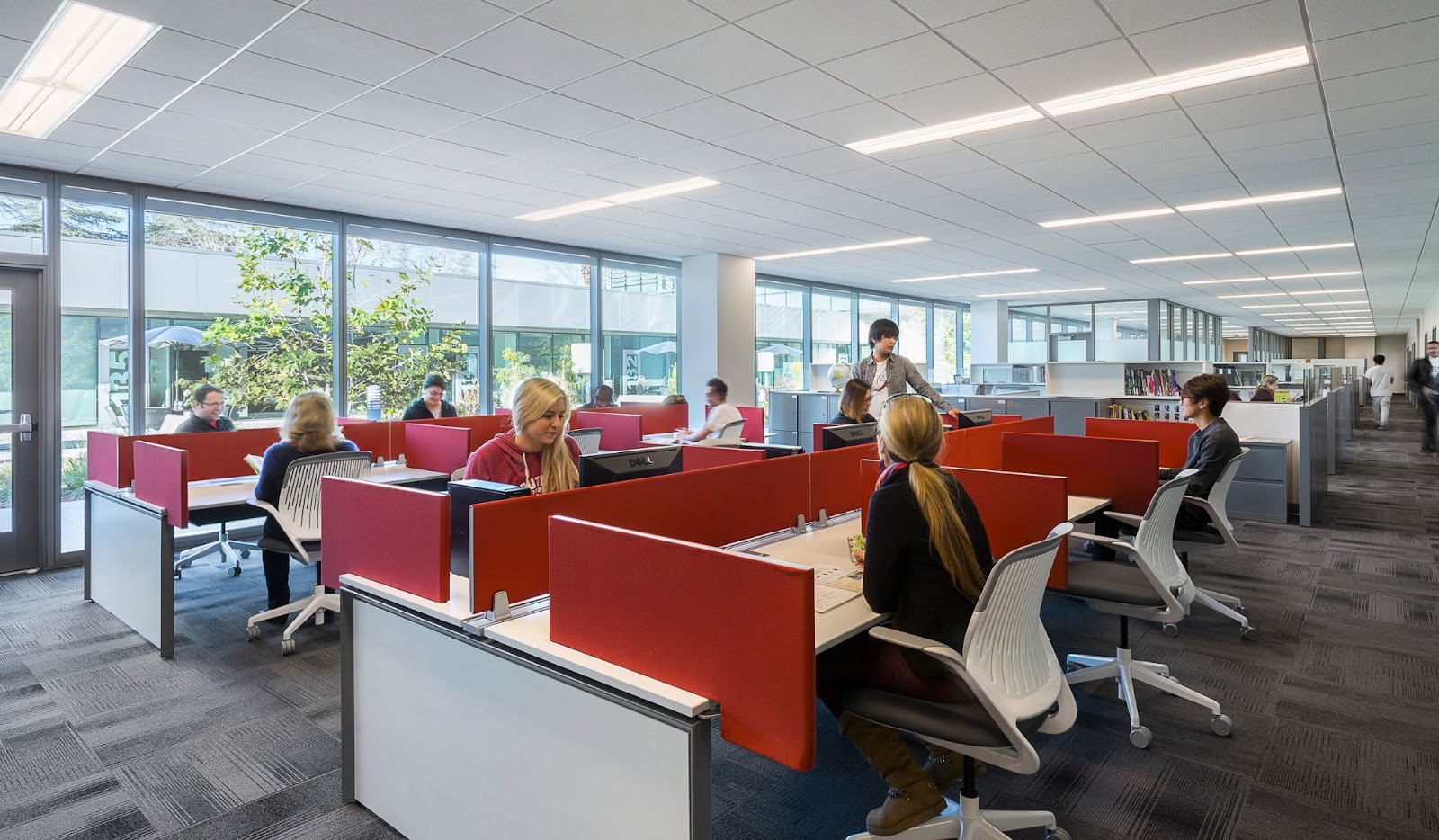
Support the Work
Spaces designed to match a school’s educational approaches and innovative pedagogies align with teachers’ goals. Flexible, collaborative environments that are open, visible and connected to the campus all contribute to supporting how teachers work.
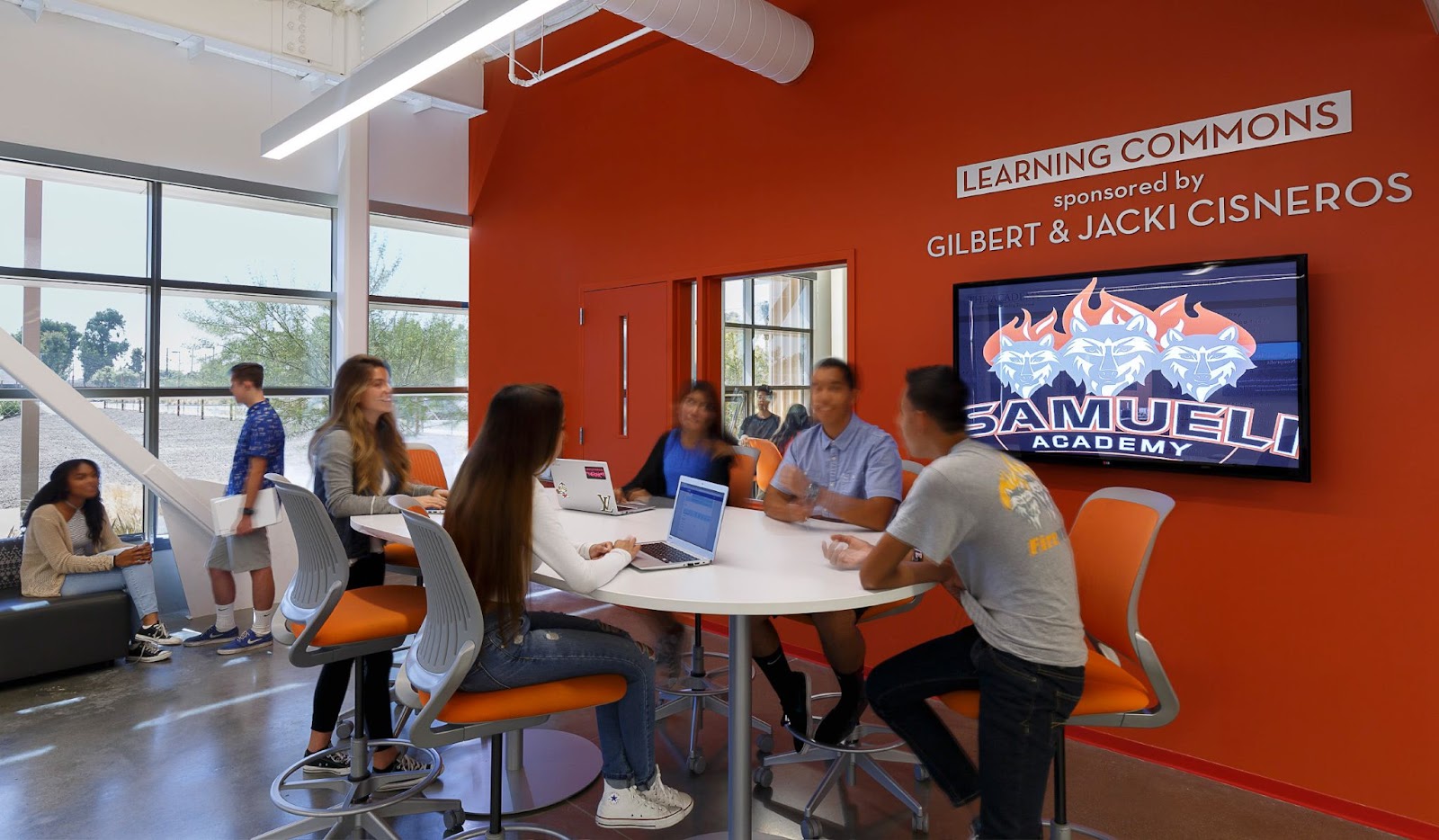
Peer Relationships
The sense of collective responsibility and peer collaboration is important for educators. Purposeful spaces support professional development and a climate of learning and collegiality.
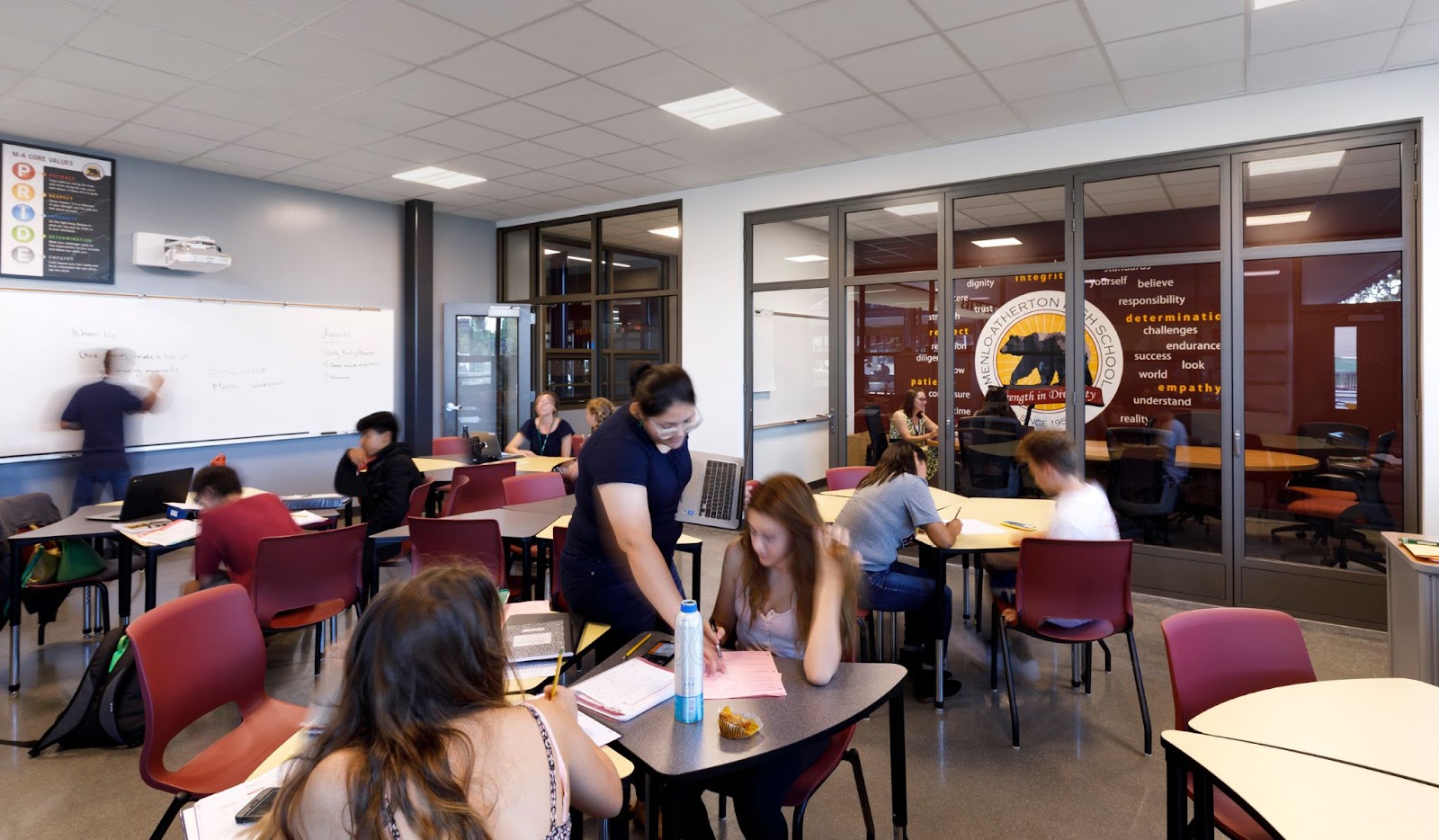
Teacher Agency
Choice and control over spaces are essential to give teachers the agency to feel they are fulfilling their needs and roles. This includes mastery in the use of spaces, as well as the ability to reconfigure spaces to their specific criteria. Engagement with teachers in the design process can provide additional agency.
In K-12 environments, design can play a similar role in creating a brand and identity that make teachers feel bigger than themselves. The research makes that connection clear. A study in the American Educational Research Journal (Boyd, etal. 2011) concluded that teachers’ perceptions of facilities are related to “both their decision to transfer and their decisions to leave teaching.” In all cases, the more positively the teachers perceive these school contextual factors, “the less likely they are to transfer to another school or to leave teaching altogether.”
Facilities that respond holistically to the needs of teachers are also more likely to connect with students, which leads to better outcomes, as well as happier teachers.
Kate Mraw is Director of K-12 for LPA Design Studios and a leading national advocate for the role of research in designing better learning environments.






0 Comments
Leave a Comment
Your email address will not be published. All fields are required.